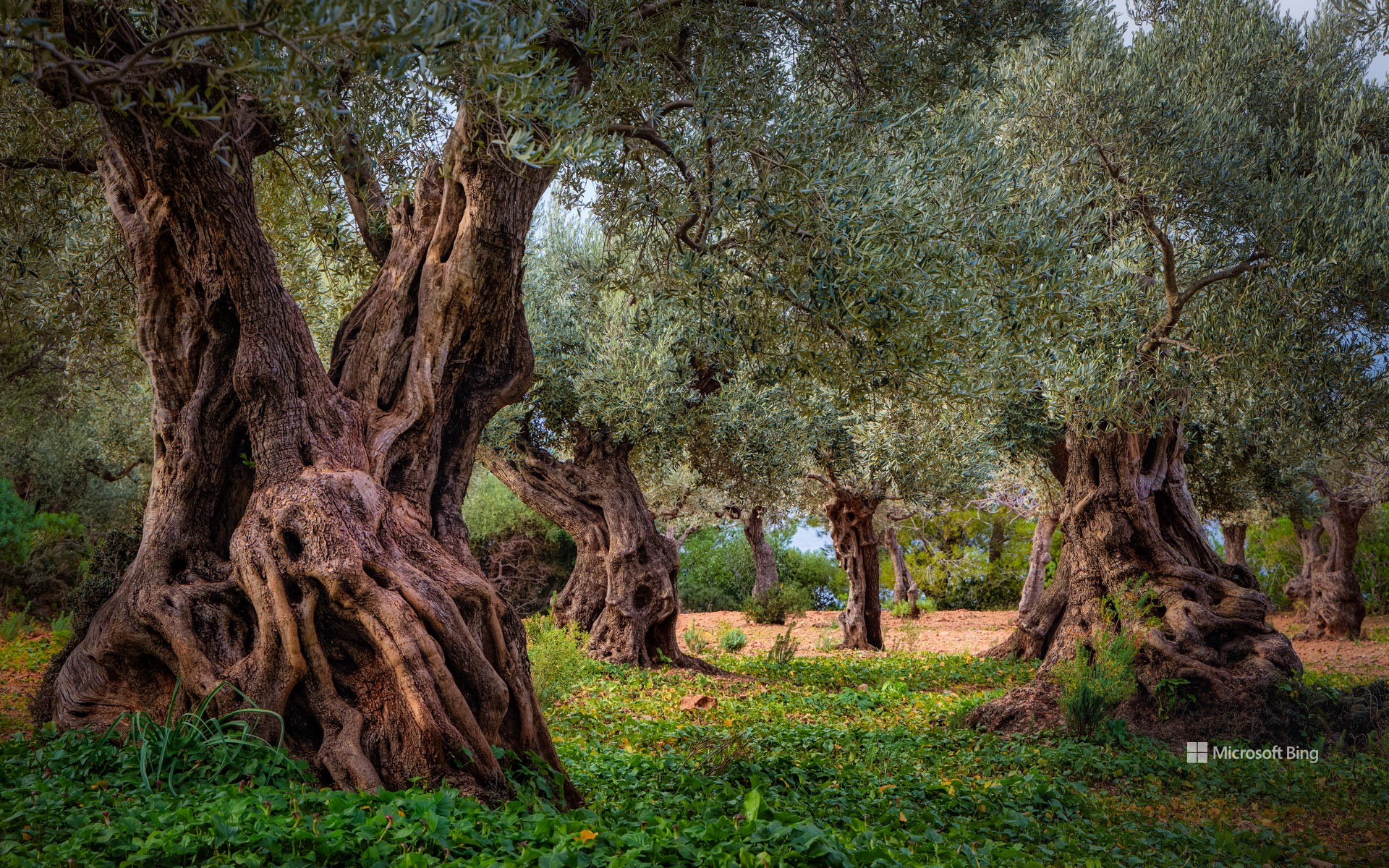特拉蒙塔纳山中的老橄榄园,马略卡岛,西班牙 Old olive grove in the Serra Tramuntana range, Majorca, Spain (© cinoby/Getty Images)

特拉蒙塔纳山中的老橄榄园,马略卡岛,西班牙 Old olive grove in the Serra Tramuntana range, Majorca, Spain (© cinoby/Getty Images)
从树上到餐桌之上 From the tree to the table
西班牙马略卡岛,巴利阿里群岛,特拉蒙塔纳山
巴利阿里群岛之一的西班牙马略卡岛种植橄榄的历史可以追溯到2000多年前。腓尼基人和希腊人是这里的早期定居者,他们将第一批橄榄树引进这个岛屿,北海岸的特拉蒙塔纳山脉是这些橄榄树的故乡。在伊斯兰时代,由于橄榄园的不断扩大,橄榄油开始在马略卡岛美食和烹饪传统中担任重要角色。
马略卡岛的橄榄树坎德特获得了西班牙“最佳纪念橄榄”的荣誉称号。据估计,这棵古老的树已有1100多年的历史。2011年,特拉蒙塔纳山区文化景观被联合国教科文组织列为世界遗产。如今,来自世界各地的游客纷纷前往该群岛,品味历史与“液体黄金”
Serra de Tramuntana, Majorca, Spain
They've been growing olives on the Spanish island of Majorca in the western Mediterranean for more than 2,000 years. Early settlers, the Phoenicians and Greeks, introduced the first olive trees but the groves in the Serra de Tramuntana range expanded during Spain's Islamic era, between 709 and 1492. Olive oil became a crucial ingredient in culinary traditions on Majorca, the largest of the Balearic Islands. One ancient tree on the island, Can Det, is estimated to be more than 1,100 years old, and is still producing olives.
In 2011, the Serra de Tramuntana was established as a UNESCO World Heritage Site. Today, tourists from all over the world visit the archipelago to taste history and the 'liquid gold.'
评论已关闭